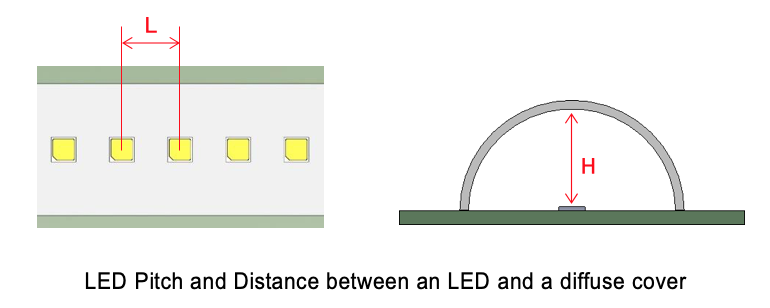How to get the best results from LED Backlighting: A Comprehensive Guide
- By Ledrise Led Professional
- Nov 30, 2022

LED backlighting is a popular and versatile lighting solution that can be used in various applications, from linear lighting fixtures to luminous ceilings and illuminated signs. Achieving the perfect balance of total luminous flux and individual LED visibility is crucial for successful implementation. This article delves into the essential aspects of selecting and positioning LEDs for backlighting applications, ensuring optimal performance while meeting project requirements.
Understanding the Basics of LED Backlighting
LED backlighting involves placing light-emitting diodes (LEDs) behind a diffuse cover to create uniform and visually appealing illumination. Common applications include:
- Linear lighting fixtures: LED strips or tubes used for accent, task, or general lighting in residential or commercial spaces.
- Luminous ceilings: Large, uniformly lit surfaces that create a sense of spaciousness and enhance the aesthetics of interiors.
- Illuminated signs: LED backlighting is used to create vibrant and eye-catching signs for branding, advertising, or wayfinding.
To achieve seamless backlighting, it is essential to consider factors such as LED pitch and the distance between the LEDs' emitting surfaces and the diffuse cover.
LED Pitch and Distance to Cover: The Balancing Act
LED pitch (L) refers to the distance between the centers of adjacent LEDs on a strip or fixture. The relationship between LED pitch and the distance from the LEDs to the diffuse cover plays a critical role in achieving uniform backlighting.
For optimal results, the distance between the LEDs and the cover should be equal to the LED pitch. For instance, if the LED pitch is 10 mm, the distance between the LEDs and the cover should also be 10 mm. This principle applies to various backlighting applications, including linear LED fixtures, LED strips in aluminum profiles, or LED tubes.
If the LED pitch is larger than the distance to the cover, the individual LED's emission light will become increasingly noticeable as the difference between the two grows. This results in undesirable hotspots, compromising the uniformity and overall appearance of the backlighting.
Conversely, if the LED pitch is smaller than the distance to the cover, the individual LEDs will blend seamlessly, but there may be a lumen loss. To achieve the desired luminous flux for the application, more LEDs or an increase in current would be needed, which may impact energy efficiency and component lifespan.
Maximizing Total Luminous Flux
Increasing the total luminous flux is essential for achieving the desired brightness levels in your backlighting application. Two strategies can be employed to enhance the flux:
-
Reflective sheet: Placing a reflective sheet with 98.8% reflectance on top of the LED strip can boost the flux by up to 2.4%. In the case of a 2000 lm/m linear LED fixture, this results in an increase of 48 lm/m compared with a highly reflective resist layer. The reflective sheet enhances the overall light output by reflecting and redirecting the light emitted from the LEDs.
-
White PCB: Selecting an LED strip with a white printed circuit board (PCB) can also contribute to increased luminous flux. The white PCB acts as a reflective surface that reduces light absorption, enhancing the overall light output from the LEDs.
At our company, all the LED strips offered are covered with a highly reflective white resist layer, ensuring optimal performance and luminous flux.
Achieving the perfect balance between total luminous flux and individual LED visibility is crucial for the success of any backlighting application. By understanding and applying the principles of LED pitch, distance to the cover, and techniques to maximize luminous flux, you can create visually stunning and efficient backlighting solutions for linear lighting fixtures, luminous ceilings, and illuminated signs.
Keep in mind that selecting the right LED products and working with reputable suppliers can make all the difference in the quality, performance, and longevity of your LED backlighting projects. Invest time in research, planning, and collaboration to ensure your backlighting applications truly shine.










